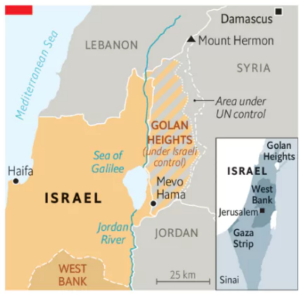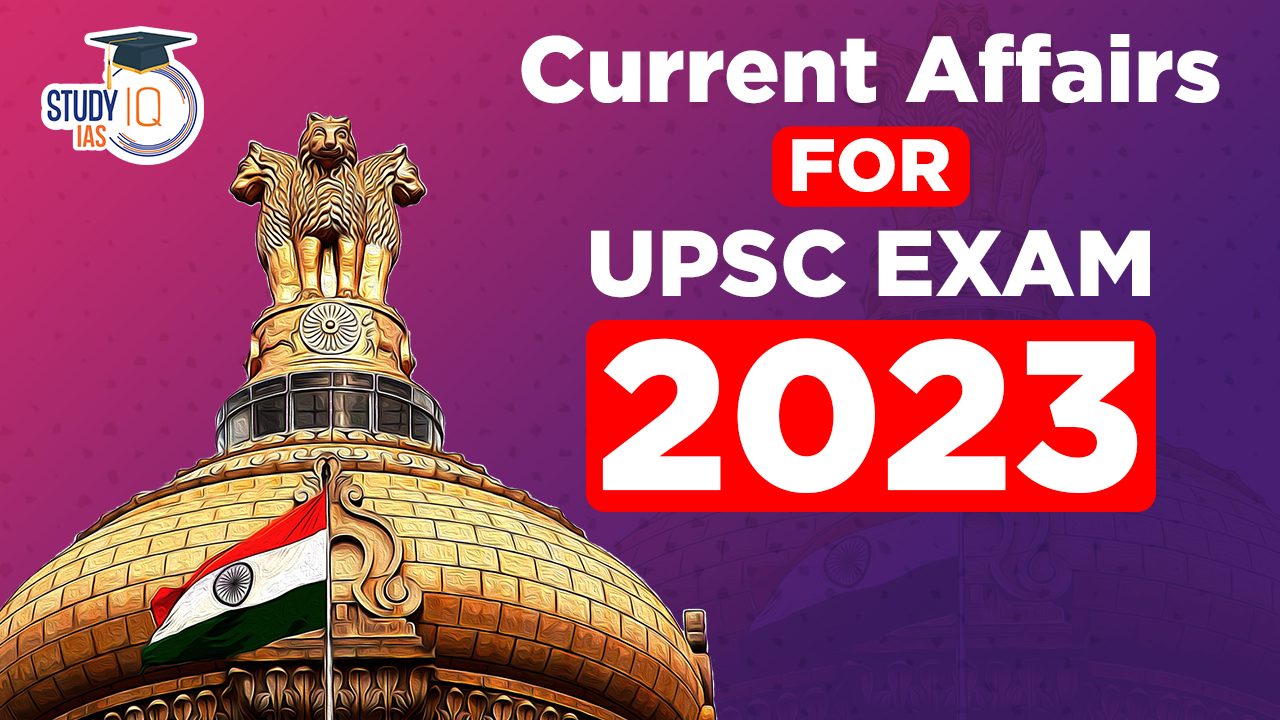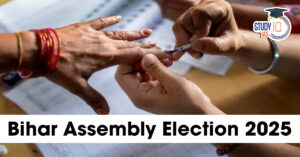Table of Contents
ASEAN India Grassroots Innovation Forum
Context: The 4th edition of the ASEAN India Grassroots Innovation Forum (AIGIF) was held in Langkawi, Malaysia.
ASEAN India Grassroots InnovationForum (AIGIF): An Introduction
- It is an annual forum designed to enhance collaboration between India and ASEAN nations in Science, Technology, and Innovation.
- Aim: To showcase social innovations across countries and bolster grassroots innovation governance.
- Organised by:
- ASEAN Committee on Science, Technology, and Innovation (COSTI)
- Department of Science & Technology (DST), Government of India
- National Innovation Foundation (NIF) – India and
- Science and Technology Ministry of the host nation (Malaysia’s Ministry of Science, Technology and Innovation (MOSTI) this year).
We’re now on WhatsApp. Click to Join
National Innovation Foundation (NIF) |
|
Indian Ocean Tuna Commission
Context: The 19th edition of the Working Party on Data Collection and Statistics (WPDCS19) of the Indian Ocean Tuna Commission (IOTC) is being hosted by the Department of Fisheries in Mumbai.
About Indian Ocean Tuna Commission
| Aspect | Details |
| Type | Intergovernmental Organization |
| Established | 1993 (Effective from 1996) |
| Secretariat | Victoria, Seychelles |
| Aim |
|
| Members |
|
| Binding Decisions | Decisions are binding on all Members and non-Contracting Parties. |
19th Working Party on Data Collection and Statistics (WPDCS19)
- Objective: To gather world-renowned scientists and experts in Tuna fisheries.
- Activities: Experts will review and analyse current scientific methods used in data collection, compilation, and reporting to the IOTC, aiming to develop more advanced and simplified methods for resource assessments.
- Significance: The meeting will precede the main Scientific Committee meeting of the IOTC.
- Recommendations from WPDCS and other working parties will be considered for scientific guidance on the sustainable management of tuna and similar species in the Indian Ocean.
|
Do You Know? |
|
United National Liberation Front (UNLF)
Context: The UNLF (United National Liberation Front) is the oldest valley-based, Meitei insurgent group in Manipur signed a peace agreement with the central government.
About UNLF
| Aspect | Details |
| About | Oldest valley-based insurgent group in Manipur, formed on November 24, 1964, under the leadership of Arembam Samarendra Singh. Initially aimed at secession from India. |
| Legal Status | Proscribed and banned under the Unlawful Activities Prevention Act. |
| Armed Wing | Manipur People’s Army, established in 1990. Received initial training from NSCN (IM). |
| Area of Operation | Operates in the valley areas of Manipur and some villages in Kuki-Zomi hill districts. Mainly based in Myanmar’s Sagaing Region, Chin state, and Rakhine state, supported by the Myanmar military. |
| Factions | Two factions: one led by Khundongbam Pambei (open to talks) and another led by NC Koireng (opposed to talks). |
| Cadre Strength | Estimated 400-500 cadres between both factions. |
| Current Status | The Pambei faction is inclined towards ceasefire negotiations since 2020, while the Koireng faction remains opposed to talks. In March 2023, the Manipur government withdrew from the Suspension of Operations (SoO) agreement with the Zomi Revolutionary Army and the Kuki National Army. |
Other Agreements
| Agreement | Details |
| Assam-Meghalaya Inter-State Boundary Agreement (2022) | ● Aimed at resolving disputes in six sectors out of twelve disputed areas between Assam and Meghalaya.
● Assam received about 18.51 sq. km, and Meghalaya got around 18.28 sq. km of the disputed areas. ● This agreement resolved about 65% of the border disputes between the two states. |
| Karbi Anglong Agreement (2021) | ● A tripartite agreement involving five Assam insurgent groups (KLNLF, PDCK, UPLA, KPLT, and KLF), the Centre, and the state government.
● Over 1,000 armed cadres from these groups renounced violence and joined mainstream society. ● The Karbis, a major ethnic group in Assam, have a history of ethnic violence and conflict since the late 1980s. |
| Bodo Accord (2020) | ● Signed by the central government, Assam government, and Bodo groups, including NDFB factions.
● It renamed the Bodoland Territorial Area District (BTAD) as the Bodoland Territorial Region (BTR). ● It involved the surrender of 1615 cadres, setting up of Bodo Kachari Welfare Council, a separate Directorate of Bodo Medium Schools, and a Special Development Package of Rs. 1500 crore for specific projects. |
| Bru-Reang Agreement (2020) | ● A quadripartite agreement involving the Centre, Mizoram, Tripura governments, and Bru leaders.
● Aimed to settle over 34,000 Bru refugees from Mizoram in Tripura. The agreement provided land, housing assistance, and rations to displaced families, along with Rs.600 crores for rehabilitation and development. |
| NLFT-Tripura Agreement (2019) | ● The National Liberation Front of Tripura (NLFT), banned since 1997, agreed to cease violence and join the mainstream, surrendering 88 cadres with their weapons.
● The Memorandum of Settlement included provisions for housing, recruitment, education for surrendered cadres, and proposals for economic development of tribal areas in Tripura. |
| Roll Back of Armed Forces Special Powers Act (AFSPA) | ● The government withdrew AFSPA from significant parts of the Northeast, including the entirety of Tripura and Meghalaya.
● In Arunachal Pradesh, AFSPA remains in force in only three districts. |
Magnetars
Context: Magnetars, with their intense magnetism, have long been suspected as the origin of fast radio bursts (FRBs), but lacked definitive evidence.
About Magnetars
- Overview: Magnetars are a rare type of neutron star, known for their exceptionally strong magnetic fields and violent eruptions. Only about thirty have been observed in our galaxy.
- Eruptions and Characteristics: These compact stars experience short, intense bursts, emitting transient X-ray pulses with immense energy. Eruptions might be due to magnetosphere instabilities or “starquakes” in their crust.
- Formation: They form when massive stars (10-25 solar masses) collapse. Among neutron stars, magnetars have the strongest known magnetic fields.
- Magnetic Field and Energy Release: Their field strength is about 1,000 times stronger than typical neutron stars and a trillion times Earth’s. They emit flares, X-rays, and gamma-ray bursts, marking them as extreme cosmic events.
- Internal Dynamics: The interior of a magnetar, possibly comprising neutrons, quarks, and exotic matter like Bose-Einstein Condensates, may act as a superconducting fluid. This generates their immense magnetic field as the star rotates, akin to a colossal dynamo.
Fast Radio Bursts (FRBs) |
LISA (Laser Interferometer Space Antenna)
|
Golan Heights
Context: India has voted to support a draft resolution at the UN General Assembly, expressing concern with Israel’s failure to withdraw from the Syrian Golan Heights.
About Golan Heights
- The Golan Heights are a strategic plateau located in the Middle East, bordering Syria to the east, Lebanon to the north, Jordan to the south, and Israel to the west.
- It was occupied and administered by Israel but internationally recognized as Syrian territory.
- Geographical Features: The region boasts diverse ecosystems, ranging from Mediterranean scrubland and forests in the west to arid steppes in the east.
- The Golan Heights are also home to numerous springs, streams, and the Sea of Galilee, a freshwater lake that serves as a vital water source for Israel, Jordan, and the Palestinian territories.

- It was captured by Israel from Syria during the 1967 Six-Day War.
- The Golan Heights also has a diverse population, including Jewish and Druze communities.
- The U.N. has maintained a peacekeeping presence in the area since 1974.


 Elon Musk’s America Party: A New Chapt...
Elon Musk’s America Party: A New Chapt...
 Bihar Assembly Election 2025: Complete G...
Bihar Assembly Election 2025: Complete G...
 17th BRICS Summit 2025: India’s Leader...
17th BRICS Summit 2025: India’s Leader...





















